What is the key regulatory compliance in fuel delivery apps?
The key regulatory compliance in fuel delivery apps that you can implement are DOT, OSHA, EPA, NFPA, local safety standards, and commercial vehicle safety standards.
Well, there are many other things that you should consider for regulatory compliance, such as steps to implement them, reasons to add them, challenges, and best practices.
As an entrepreneur who is considering entering the fuel delivery industry, it's important to look for the compliance and regulations that you can implement successfully.
Are you ready to learn more about the same?
Yes! Then let's proceed together.
Why Regulatory Compliance Matters?
Regulatory compliance truly matters because it ensures that businesses operate ethically and legally, protecting stakeholders, customers, and the environment.
The compliance does help avoid fines and prevent reputational damage. This does promote trust and builds a positive brand, which contributes to long-term sustainability.
Regulatory compliance is crucial in the fuel delivery industry to ensure public safety, environmental protection, and legal operation.
It helps businesses avoid costly fines, legal penalties, and reputational damage. Adhering to industry standards—such as hazardous material handling, vehicle safety, and environmental policies—also reduces the risk of accidents and pollution.
Moreover, compliance builds trust with customers and regulatory bodies and supports long-term business sustainability in a highly regulated and high-risk sector.
When it comes to a fuel delivery app, regulatory compliance is a must. How?
Well, regulatory compliance results in the fuel delivery app are an important component to study; let’s figure it out in the following section.
Essential Compliance Requirements for the Fuel Delivery App
When you proceed to create a fuel delivery app, it's important to evaluate standards and compliance to follow in this industry.
Let’s explore more about the same in this section.
1. Licensing and Permits Integration
The fuel delivery app should ensure that it must ensure that all the delivery partners and vehicles are verified for the appropriate licenses.
The data licensing laws and local licensing permits need to be considered while you enter this industry.
This app must track and validate fuel transport permits and certifications based on the local, state, and federal laws.
2. Data Privacy and Cybersecurity
Data privacy and regulatory guidance ensure compliance with data protection laws such as GDPR and CCPA for protecting the user and operational data.
It comprises encryption, secure login, and data retention policies in the app’s backend.
Additionally, the regulatory practices can help in fostering the trust of the users in the businesses.
3. Helps in Real-Time Tracking and Reporting
With the assistance of real-time tracking and reporting, you can establish clear standards in the app, providing a framework for monitoring and ensuring accountability.
This can be useful in proactive risk identification in the fuel delivery businesses.
Along with this, it focuses on preventing risks through real-time monitoring for identifying potential as well as compliance risks before they even escalate, helping organizations to take corrective measures.
4. Builds Users Trust
Have you considered that the people's trust improves when they realize that your app is valid and safe to use?
Well, yes, it's possible. Here, you can proceed with strengthening the trust among the users and providing them with all the assurance to use the app safely.
It does help to ensure that the users fill in their authentic data in the app to genuinely help them with the fuel refills.
5. Provides a Monitoring Framework
Through the assistance of laws and regulations, you can include a monitoring framework by establishing the rules, regulations, and important guidelines that the organizations should follow, and then implementing mechanisms for ensuring adherence.
It ensures compliance with the consumer protection laws and security protocols.
The fuel delivery apps should comply with the standards to enhance the overall performance of the business.
Therefore, you should comply with the regulatory compliance in the fuel delivery apps.
Now, let’s learn about the key regulatory bodies and standards for the fuel delivery apps in the following section.
Key Regulatory Bodies and Standards for the Fuel Delivery App
Aren’t you aware of the regulatory bodies and standards for your fuel delivery apps?
Let’s learn more about the regulatory bodies and standards for the same.
► Department of Transportation (DOT)
One of the significant roles of regulatory bodies and standards is to regulate the transportation of hazardous materials, including fuels.
Along with the DOT, the vehicles should comply with the Federal Motor Carrier Safety Administration (FMCSA) rules for transporting hazardous materials (HAZMAT).
► Environmental Protection Agency (EPA)
The EPA is a US federal agency established to protect human health and the environment. This app also ensures compliance with the consumer protection laws and the security protocols.
Additionally, EPAS aims to enhance sports governance, promote ethical standards, and make sports safer and more inclusive.
► Occupational Safety and Health Administration (OSHA)
The Occupational Safety and Health Administration ensures safe working conditions for the employees handling and delivering fuel.
This act was established by the Occupational Safety and Health Act of 1970 to enforce workplace safety standards. In this law, employers are responsible for providing a safe and healthful workplace for their workers.
► National Fire Protection Association (NFPA)
You should develop fire safety codes and standards related to flammable substances. When you have a vehicle full of fuel, whether it's gas, petrol, or diesel, it's important to follow the NFPA standards while entering this business.
This regulatory standard is vital for ensuring safe and healthy working conditions for the working men and women through setting and enforcing standards through training.
► Local and State Regulatory Agencies
You should enforce region-specific laws and require following them for the fuel distribution and mobile fueling.
The compliance areas to be considered are licensing and zoning requirements, stating specific fuel taxes, and reporting through transporting permits.
► Commercial Vehicle Safety Standards
Vehicles should meet the Federal Motor Carrier Safety Administration (FMCSA) rules, which include licensing, daily inspections, and maintenance logs, along with hours of service limits for drivers.
This regulation should be followed effectively to enhance the standard of your app in this competitive environment.
These were the regulations and standards that should be engaged and to be followed when it comes to starting an online fuel delivery business.
Till now, we have discussed the regulatory compliances, their requirements for the fuel delivery apps, and the standards that should be followed in this scenario.
Now, let’s look forward to the steps to implement the regulatory compliance in the fuel delivery app in the following section.
How to Implement Regulatory Compliance in a Fuel Delivery App?
Learning about the standards and regulatory practices isn’t enough until you know the process well to implement the same in the app.
To get into the list of top fuel delivery apps, it's essential to know the ideal steps to implement and follow compliance practices for your fuel delivery apps.
Let’s discover it all broadly in this section.
Step 1: Conduct Legal Research
If you seek that your app isn’t according to regulatory compliances and practices, it's vital to conduct legal research.
You should proceed with understanding the local, state, and national laws on hazardous material transport, because at fuel delivery, it's important to refer to authorities such as the DOT and NFPA.
This step will help you analyse the competitive environment all at once. Along with recognizing the key compliances that might help you sustain the competitive environment.
Step 2: Integrate Real-Time GPS and Route Monitoring
You should use GPS tracking software to monitor vehicles and to ensure that they follow approved routes.
Additionally, you should implement geofencing to avoid any high-risk affiliated areas. This will help you to identify the key areas to identify ETA routes to reach the user.
This will help you to continuously track a vehicle’s location and the simultaneous monitoring of its planned route.
Step 3: Secure Licensing and Permits
It is essential to opt for secure licensing when it comes to fuel delivery apps; all the drivers should have their licenses and permits from the government to operate and drive a fuel delivery vehicle.
This is an important practice when you initiate with the business as it will help you to follow all the regulations and compliances based on licenses.
Additionally, you should obtain permits for fuel dispensing, storage, and delivery from relevant authorities.
Step 4: Vehicle and Safety Standards
You should follow the vehicle and safety standards that will minimize the risks of delivering fuel to the users.
Under this step, you should equip vehicles wth fire extinguishers, proper ventilation, and spill kits. Additionally, the containers that you will use here require to be certified, and ADR compliant vehicles for safe transport.
It's important to conduct regular maintenance checks and inspections. This step can be considered as a practice to implement smoothly.
Step 5: User Identification and Robust Data Privacy Measures
For user identification, you should integrate KYC protocols for verifying users who are legally allowed to buy fuel.
Along with this, it's important to integrate regulations such as GDPR, CCPA, and local data protection laws, encrypted user data, and transactions.
Here, you should add privacy policies and consent prompts clearly in-app. This step will help ensure the safety of the user’s data.
Step 6: Ensure Digital Payment Compliance
Now, it's time to ensure the digital payment compliances through integrating PCI-DSS compliant payment gateways.
You should allow secure, multi-factor authentication transactions after implementing advanced security protocols and technologies.
Well, you can store no sensitive data locally, after including digital payment compliance. You can use blockchain in fuel delivery apps to ensure transparency in the project.
Step 7: Educate and Train the Team
In this step, you should provide compliance training for drivers and backend staff.
For educating and training the fuel delivery drivers, you should integrate a comprehensive program, encompassing the safety protocols, regulatory compliance, and efficient delivery practices.
This step should include initial and ongoing training covering topics such as hazardous materials handling, customer service skills, and route optimization.
Step 8: Perform Regular Audits and Compliance Reporting
This is the last step in implementing regulatory compliance in fuel delivery apps, where you should remember to perform regular audits and compliance reporting.
Here, it's important to maintain digital records of deliveries, driver logs, and customer data. You can maintain a fuel delivery app regularly to keep up with these regulatory practices.
Additionally, you should prepare reports for regulatory inspections, which will help you connect with the market compliance.
Now, the question arises related to challenges while maintaining regulatory compliance. Let's learn them all in the given section in detail.
Challenges in Maintaining Regulatory Compliance
What are the top challenges to consider while maintaining regulatory compliance for the app?
Yes, there are many. You might be facing a challenge while creating a fuel delivery app; well, it can be poor compliance with regulators.
Let’s check out the following list of challenges in compliance implementation for fuel delivery.
1] Multi Jurisdictional Compliance
When you operate in different states or regions in the fuel delivery apps, there can be diverse regulations and rules that you should follow in detail.
Here, you should adhere to varied licensing, taxation, and safety requirements. It comprises understanding and complying with the diverse laws, regulations, and reporting requirements.
2] Environmental & Fire Safety Risks
One of the crucial risks is handling the mobile fuel delivery that involves handling flammable liquids in public spaces.
There can be fire safety hazards for which you should ensure adherence to the EPA, SPCC, and NFPA codes, which require specific protocols and licenses. Thus, it is one of the challenges that you might face in this industry.
3] Data Privacy Concerns
With evolving laws and regulations in this competitive environment, it's essential to look for data privacy. Is your app capable of scaling up audiences by ensuring they follow data protection guidelines?
Well, data protection is the prime consideration of the users when they fill in their data in the app. Here, safeguarding the customer data and ensuring privacy is one of the parameters and regulatory challenges that you might face.
4] Resource Constraints
Many organizations face resource constraints while meeting the compliance obligations for small businesses.
With the limited fuels and resources, you might face challenges in fulfilling every user's demands, thus, this can impact the overall goodwill of your app in this competitive environment.
5] Controlling Compliance Cost
The rapid growth of standards, regulations, and laws places a considerable burden on compliance professionals, along with the compliance costs rising by 45% over the past decade.
You can prioritize proactive risk management, streamline compliance procedures via automation, and utilize compliance management software. However, this can result in increasing the cost to build a fuel delivery app in the UAE.
These were some of the crucial challenges while implementing regulatory compliance in the fuel delivery app.
Now, it's time to learn about the key practices that you can implement while creating the app and mitigating above mentioned challenges.
Let’s learn them all below.
Best Practices for Fuel Delivery Regulatory Compliance
If you want to have the fuel delivery app security, it's important to follow the regulatory compliance and regulations.
Let’s learn all of them in the list given below.
A] Integration of Federal Regulations
You should ensure that your app complies with all the relevant laws, such as hazardous material transportation, vehicle safety, and fuel storage.
These include DOT (Department of Transportation), EPA (Environmental Protection Agency), OSHA (Occupational Safety and Health Administration), and local fire and environmental codes.
B] Implement Real-Time Tracking and Documentation
It's important that you implement the real-time tracking and monitoring practices when you create your fuel delivery app.
Here, you can include GPS tracking, automated logs, along with digital receipts to maintain transparency in records.
C] Maintain the Key Vehicle Safety Standards
This is among the best practices where it's significant to maintain the key vehicle safety standards through ensuring that all the delivery vehicles meet particular standards.
It comprises FMCSA regulations, periodic inspections, and maintenance schedules, along with the installation of safety gear.
D] Use Secure and Compliant Technology
You should follow the practice of securing the app architecture through laws such as data protection regulations, encrypted data storage, as well as secure payment gateways, and identification verification.
This practice can help enhance the users’ confidence in the app and ensure they use the technologies efficiently.
E] Schedule Regular Compliance and Audits
Apart from the defined practices, it's important to conduct internal audits and third-party inspections to verify the alignment gaps, identify gaps in training, record-keeping, or equipment safety, and stay prepared for the regulatory visit.
These regular compliance practices can help you attain the defined parameters to improve your market position and build trust among users.
F] Collaborate with Experts
You should work with compliance consultants, legal advisors specializing in transportation or energy, and local regulatory authorities during the app planning and update phases.
This practice can help you to be updated related to any new rules and regulations issued by law.
Therefore, following such practices can help you implement regulatory compliance in fuel delivery apps more smoothly.
Connect with JPLoft and Create Your App
Wondering about regulatory compliances to follow for your fuel delivery app?
Well, no need to worry.
Connect with the experts of JPLoft and let your app never get out of legal compliance.
Our team will help you provide all the current details related to the legal procedure to follow in the fuel delivery app industry. From market analysis to providing detailed reports, we can help you to survive the competition.
We are the leading Fuel Delivery App Development Company focused on delivering integrity and honesty in our every project, from research, development, to maintenance.
Conclusion
Overall, regulatory compliance is the cornerstone of a successful and legally sound fuel delivery app. By adhering to standards set by key regulatory bodies like DOT, EPA, OSHA, and NFPA, businesses can ensure public safety, environmental protection, and operational efficiency.
Implementing practices such as real-time tracking, data privacy protocols, secure licensing, and vehicle safety standards not only minimizes legal risks but also builds user trust and promotes long-term sustainability.
As the industry evolves, staying ahead of compliance requirements is essential to maintaining a competitive edge. Partnering with experts ensures your app remains aligned with legal standards and market expectations.
FAQs
It ensures legal operation, public safety, and environmental protection while preventing fines and building user trust.
Key bodies include the DOT, EPA, OSHA, NFPA, and local/state agencies that regulate safety, transport, and environmental standards.
By following laws like GDPR and CCPA, implementing encryption, secure logins, and clear consent policies.
Businesses must secure driver permits, fuel transport licenses, and comply with local, state, and federal laws.
It enables route monitoring, risk identification, and proactive safety actions, helping meet regulatory standards.





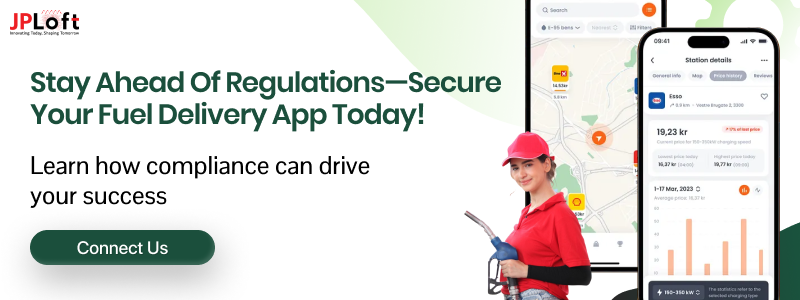
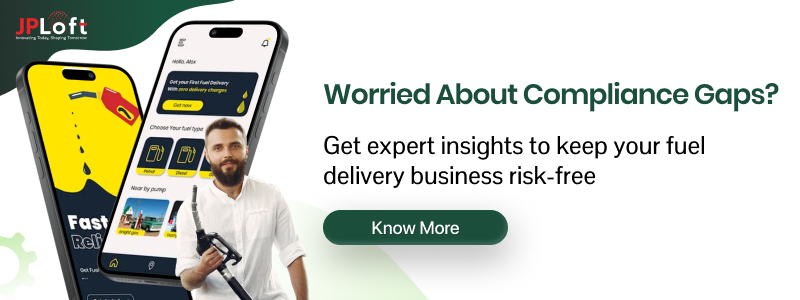

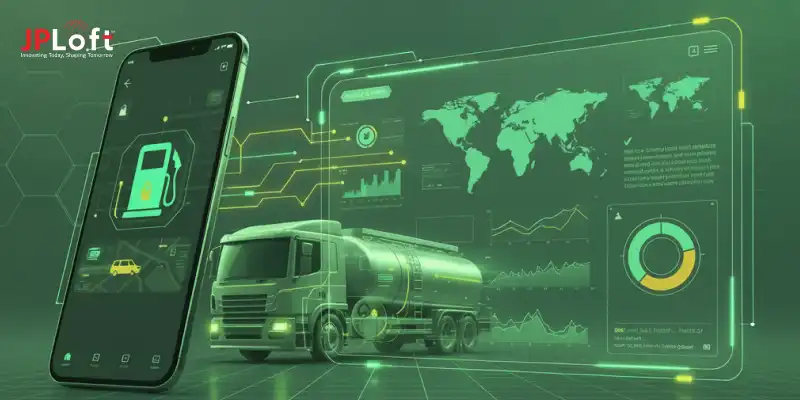
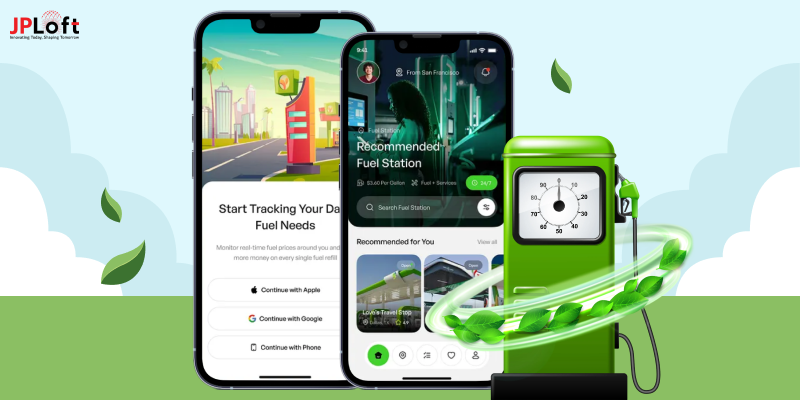
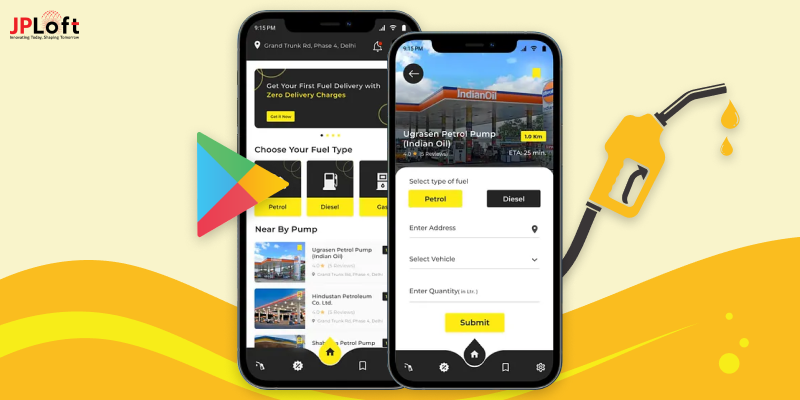


Share this blog